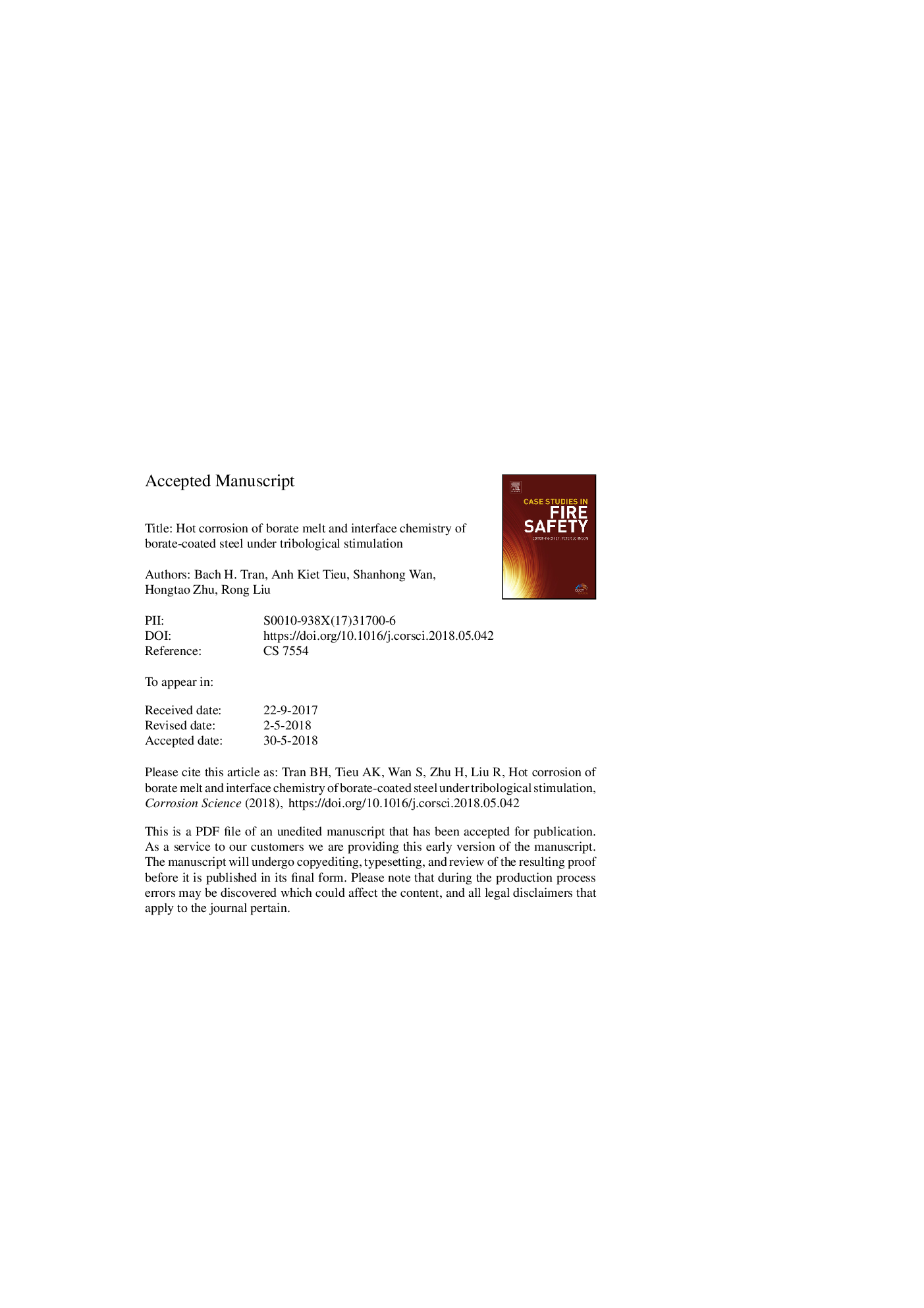| Article ID | Journal | Published Year | Pages | File Type |
|---|---|---|---|---|
| 7893297 | Corrosion Science | 2018 | 34 Pages |
Abstract
Hot corrosion mechanism of Sodium Borate was investigated on mild-carbon steel at 800â¯Â°C by multiple surface characterizations. In addition, effects of tribological exposure on the interface chemistry were also examined in details by mean of ball-on-disk testing. The occurrence of interfacial reaction is characterized by the formation of a Sodium-rich film on the borate melt/oxide phase boundary. The basic dissolution reaction is accompanied by fluxing action of the protective scale in the case of static oxidation. External stressed shearing profoundly modifies the interface chemistry by establishing a hierarchical boundary film with remarkably low Oxygen density which renders improved oxidation resistance.
Related Topics
Physical Sciences and Engineering
Materials Science
Ceramics and Composites
Authors
Bach H. Tran, Anh Kiet Tieu, Shanhong Wan, Hongtao Zhu, Rong Liu,
